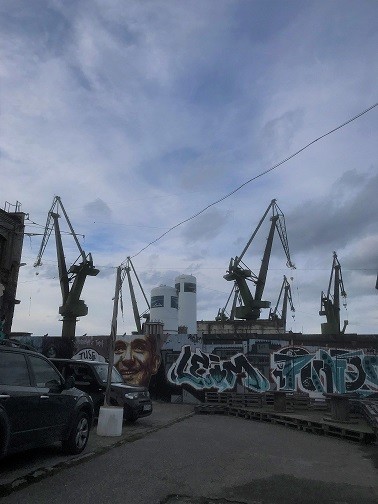
In Gdansk, there are many interesting places and tourist attractions. In the city among other things, there are many interesting restaurants, old monuments and galleries. Every year in Gdansk there is a Dominican fair, which is also held in summer and is one of the largest fairs in Europe. Cranes are characteristic for Gdańsk port, which can be seen in the shipyard, and often on city postcards, or souvenirs. However, hardly anyone is aware that lifts can be an attraction tourist. They also have their own story, which is not the happiest.
Cranes are used for various types of load transfer. In Gdansk you can meet with a port crane for special applications – loading and unloading ships. According to data from 2012, there are about 110 cranes in Gdańsk, including about 59 cranes shipyard and 51 port cranes, but these numbers do not include cranes from the Port North. The oldest crane located in Gdansk is built in Middle Ages, the most famous Gdansk crane. However, when it comes to cranes in the yard, the oldest is the crane built in 1937 “M1”, but there are also cranes with no data. These data were not provided by the shipyards, and in them we can find out about the year of production. Such cranes are “W31” and “M7”. It is suggested that both cranes were constructed before the war and worked in those times. “W31” was dismantled and scrap metal in 2013. In the same year, “M5” was also sent for scrap. However, these are not the only constructions that were dismantled from the shipyard. A year earlier, 4 cranes were liquidated, including 2 harbor cranes and 2 shipyard cranes – one of the largest cranes was cut in January at the Imperial Shipyard, and in the spring a rotary crane was brought to scrap, which was near the SKM Stocznia stop. Today, the tallest cranes on the Gdansk panorama, but going back to times pre-war, the most visible and eye-catching was the poolside crane shipyard equipment. The people called this construction “Hammerkran” or “crane hammer“ and it was also called ”grandfather“. The crane has been visible in Gdańsk since 1914 year. It was 60 meters high and could carry around 250 tons. It was used for placing in ship hulls and heavy equipment. It operated until 1945, because then the crane was treated as a war spoil of the Red Army. It was not able to take it out completely, so it was decided to cut it, and then transport it to the east. Unfortunately, “Grandpa” never reached Russia. There are various theories that say what happened to the crane, one of them says that the cut pieces of “Grandpa” went to the metallurgical furnace, the other says the crane has drowned along with the ship carrying it, but no one really knows what happened to it, it was only known that the Gdansk panorama disappeared forever. Another crane, called “Long Henry,” has disappeared from sight, but its story is not as tragic as its grandfather’s. Henry in 1950 got a failure – a crane arm fractured. After renovation, it operated until 1978, and then went to the Ship and Shipping Museum in Rostock. Currently, the crane is open to tourists. Another lift also open to the public is “M3”, from which you are in able to see not only the Gdansk panorama, but also the entire Tri-City. Admission to this punk Lookout is 10 PLN, and the proceeds from this are allocated to the purpose of the foundation dealing with homeless and poor, disabled people, and children from pathological backgrounds.
Краны, Żurawie
Автор: Karolina Borkowska, студентка I курса Русской филологии Гданьского университета, бакалавриат
Перевод на английский и русский языки: Daria Rządkowska, студентка II курса Русской филологии Гданьского университета
